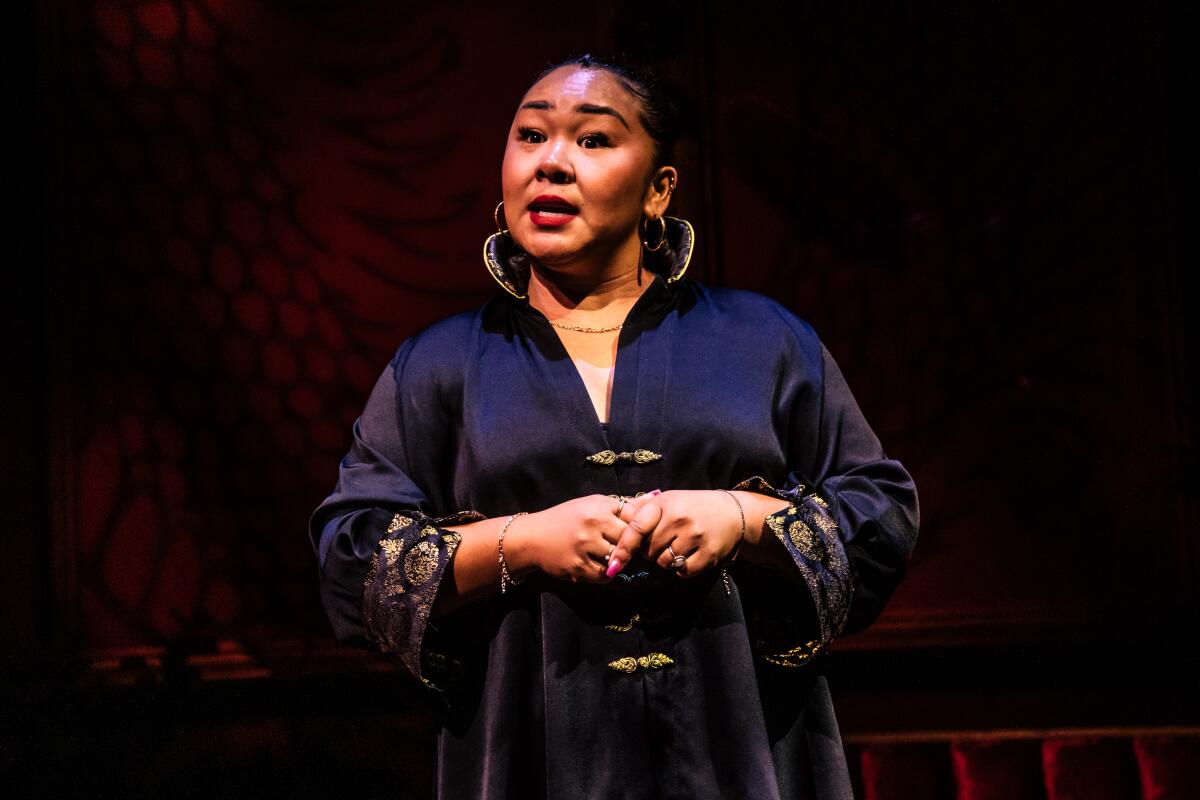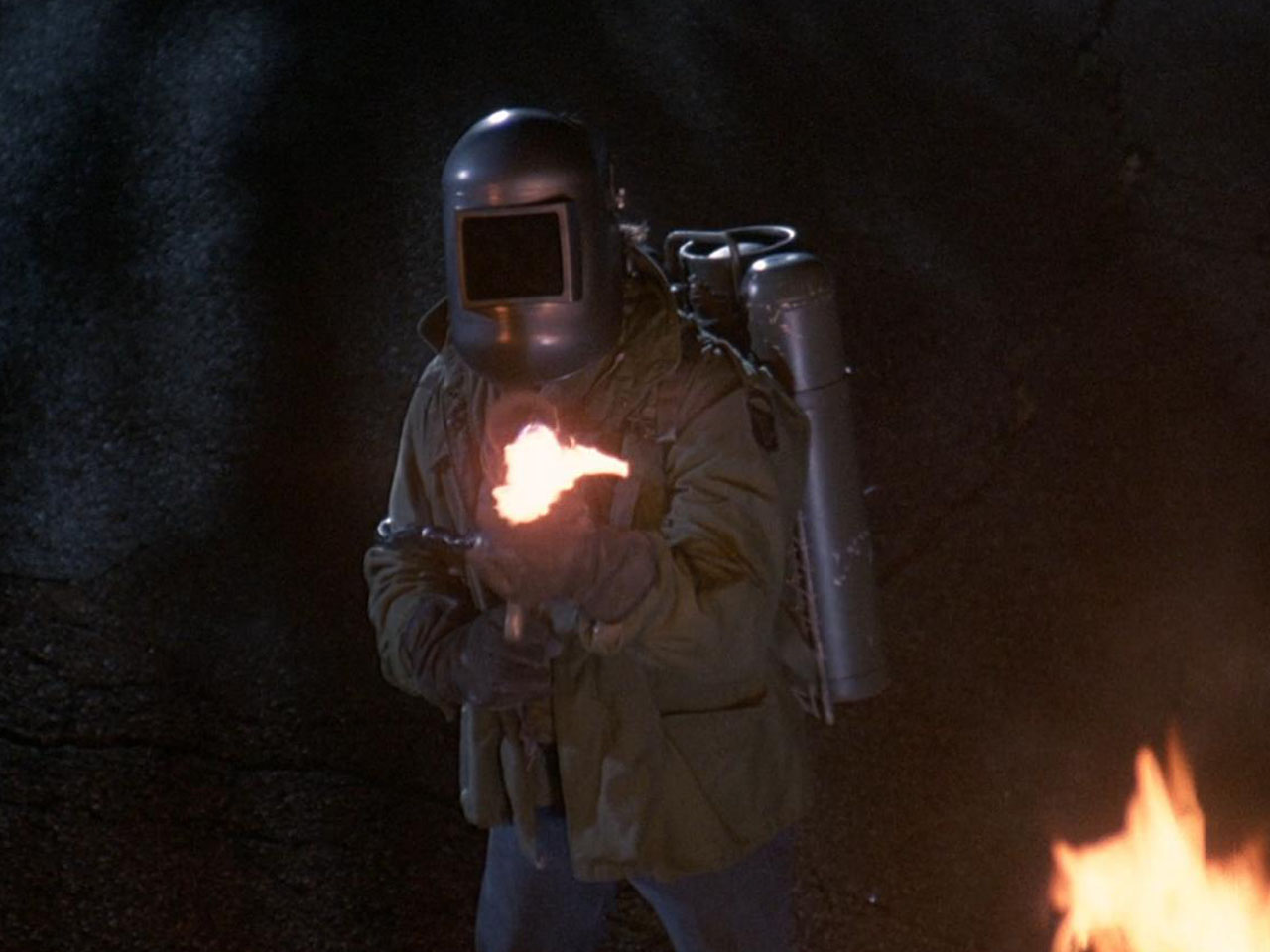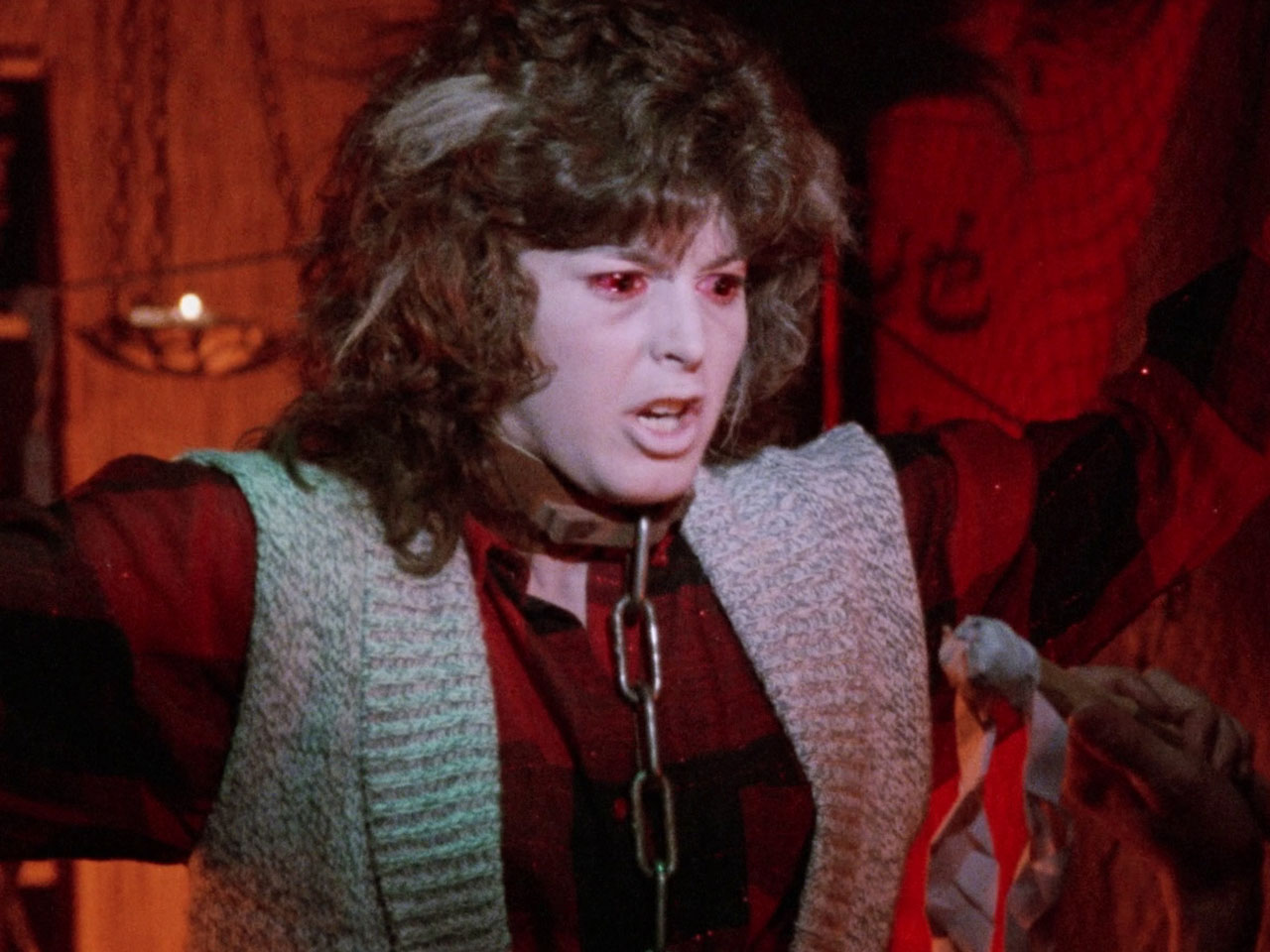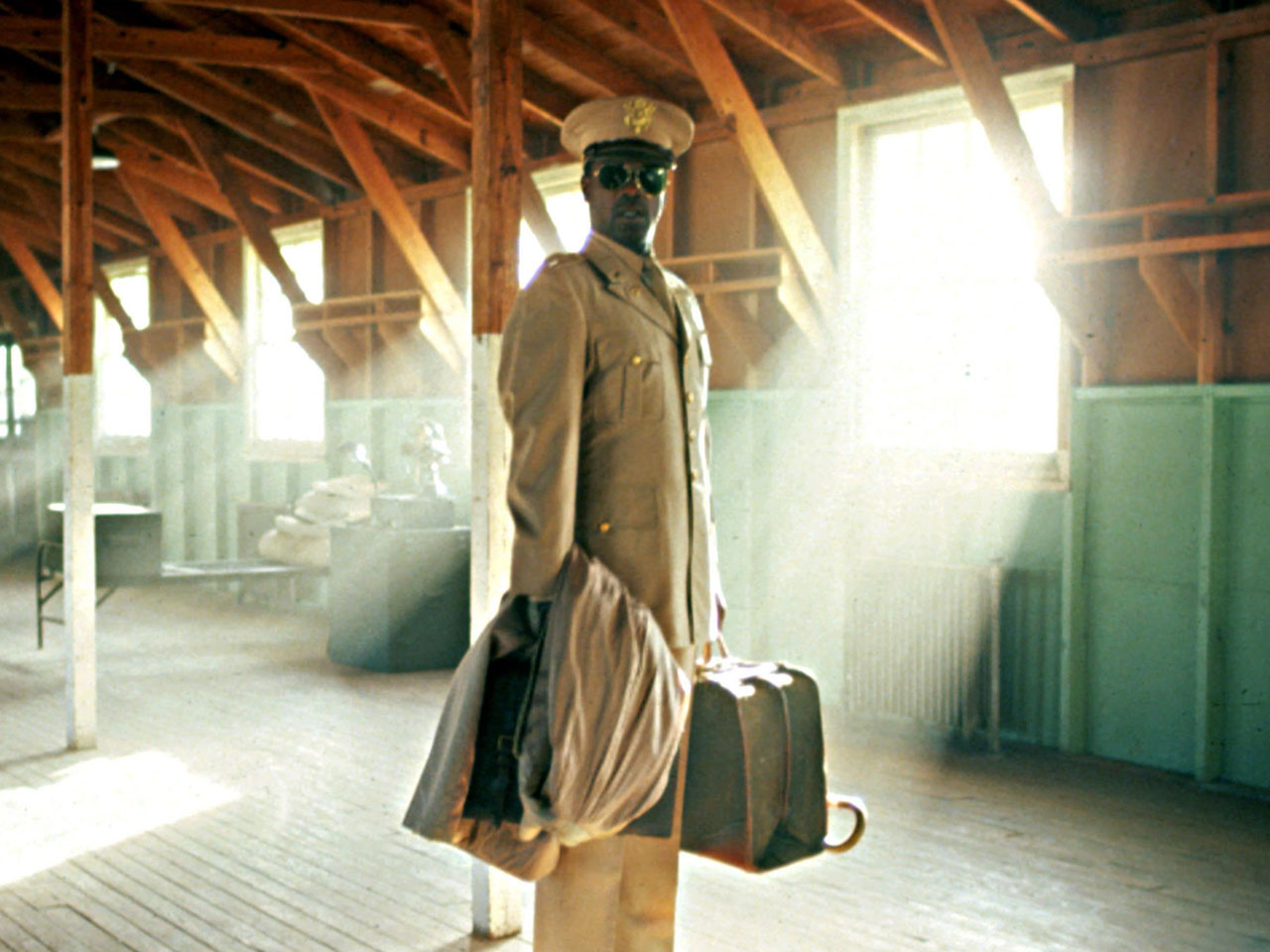Entertainment
Review: Sara Porkalob sings her truth in dangerous 'Dragon Lady' at Geffen Playhouse

Three generations of women are assembled in Sara Porkalob’s “Dragon Lady,” the first in her three-part series of musicals about what she refers to as her “Filipina American gangster family.” She’s not exaggerating. When baby Maria comes crying home after being bullied by a neighbor, her mother hands her a golf club and tells her to go back over there and kill the kid.
She’s not kidding, either.
The show, which opened Thursday at the Geffen Playhouse’s Gil Cates Theater under the direction of Andrew Russell, takes place on Maria Porkalob Senior’s 60th birthday. She and her daughter Maria have had a strained relationship predating even the golf club incident. Feeling unfairly judged as she approaches her golden years, Maria Sr. decides to share episodes of her harrowing life with her granddaughter Sara. What follows are scenes out of a movie melodrama — helpless poverty, horrific exploitation, routine brushes with violence and near-death escapes — performed under the guise of a karaoke cabaret.
Sara Porkalob’s “Dragon Lady” delves into a family story marked by intergenerational trauma.
(Jeff Lorch)
Sara Porkalob starred in the 2022 Broadway revival of “1776,” directed by Jeffrey L. Page and Diane Paulus and featuring a multiracial cast made up entirely of female, transgender and nonbinary actors. The production was meant to view the musical through a 21st century, post-“Hamilton” lens, but Porkalob caused a stir in theater circles when she openly critiqued the handling of race and gender both in the rehearsal process and in the show itself.
That uncensored fearlessness, while not always appreciated in a team setting, is a valuable attribute in an artist creating her own material. Porkalob isn’t beholden to anything but her pursuit of the truth, which can be a dangerous game when delving into a family story marked by intergenerational trauma.
“Dragon Lady” moves back in time from the state of Washington to the Philippines, where we find Maria Sr. as a young girl, trying to survive the brutal murder of her father by a notorious gang. Working in the Red Dragon, a Manila nightclub owned by gangsters, Maria starts off as a cleaner, but as she matures into an attractive young woman she is promoted to singer. Promoted is a dubious choice of words, because the entertainers at the Red Dragon are expected to do whatever it takes to satisfy the customers.
Before she even knows what love is, Maria is swept off the stage by the boss of a ruling gang and impregnated. The story of her fight to keep her first daughter, whom she names Maria Elena, after herself, “her bittersweet joy,” represents the climax of the first half of “Dragon Lady.” Maria Sr., in many ways still a child herself, sings to her daughter, “I wish I could tell you that you are no child of pain / But you have my blood in your veins … / And trouble’s a family trait,” a haunting refrain that echoes turbulently throughout the generations.

Sara Porkalob tells her family’s story in “Dragon Lady.”
(Jeff Lorch)
The second half of “Dragon Lady” tells baby Maria’s side of the story. She’s 13 years old when we encounter her back in Washington, after Maria Sr. has moved to the U.S. with an American navy man who fell under her spell at the nightclub. He married her and gave her his last name, but this marital lifeline doesn’t have enough elasticity to withstand Maria Sr.’s past. As the eldest child, young Maria has no choice but to take over the childcare duties of her four younger siblings as her mother desperately tries to earn a living while simultaneously doing everything in her power to attract a new breadwinner for her family.
Porkalob is a vivid actor, but the dizzying array of squeaky children in the second half can make it hard to keep the story straight. Even so, the general picture of a mother’s absence and a daughter’s understandable resentment at having had to pick up the maternal slack in penurious conditions comes through loud and clear. At times there isn’t a single jar of baby food in the house, forcing Maria’s siblings to go out and beg for food donations. This scene seems plucked out of Charles Dickens, but we’re in the Pacific Northwest with a Filipino family and far removed from Victorian consciousness.
Porkalob doesn’t take sides in the conflict between her grandmother and mother. She gives both women their due, providing sufficient context to prevent us from jumping to judgment too quickly. There’s a mischievous element to Porkalob’s storytelling morality that is a direct result of Maria Sr.’s presence. Firing up her jukebox karaoke machine, this newly turned 60-year-old raps by way of introduction, “But I ain’t never killed a man that didn’t deserve it.” Words that we will see come true — at least if we are to credit her account, something her first-born daughter is less apt to do.

Sara Porkalob wrote “Dragon Lady” about her family.
(Jeff Lorch)
“Dragon Lady” works best as a one-person musical. Porkalob shares the stage with three extraordinary musicians (Pete Irving, Jimmy Austin and Mickey Stylin) who largely appear in the shadows of an inset space on the fabulous, garish red nightclub set by Randy Wong-Westbrooke. But she performs all the characters herself, and when she launches into song with her exquisite voice, moving from a range of high bell-like clarity to dusky lowdown in both original material by Irving and tweaked standards, the show is most fully alive.
When “Dragon Lady” becomes more of a conventional solo piece after intermission, a showcase for Porkalob to flex her versatility as an actor, the effect isn’t quite as powerful. One of the issues is that the tale being spun raises more plot questions than can be answered in the allotted time. Details and consequences are breezed over or ignored entirely, making “Dragon Lady” seem sketchy in places. When Porkalob is singing, however, the audience is too rapt to worry about a full narrative accounting.
Part 1 of the Dragon Cycle may not have found its ideal balance between music and drama, but Porkalob leaves a potent theatrical impression. Her family’s immigrant story must be exceedingly painful to relive, but it’s also clearly empowering. And not only for her but also for theatergoers who might feel that their own unsanitized histories couldn’t stand scrutiny on a public stage. “Dragon Lady” gives permission for the marginalized and the morally messy to belt out their complicated truths.
‘Dragon Lady’
Where: Gil Cates Theater at Geffen Playhouse,10886 Le Conte Ave., L.A.
When: 8 p.m. Wednesday-Friday, 3 and 8 p.m. Saturday, and 2 and 7 p.m. Sunday. Ends Oct. 6.
Tickets: $45-$139
Contact: (310) 208-2028 or geffenplayhouse.org
Running time: 1 hour, 50 minutes (including one intermission)

Movie Reviews
1984 Movie Reviews – Exterminator 2, Ninja III: The Domination, and A Soldier's Story | The Nerdy

Welcome to an exciting year-long project here at The Nerdy. 1984 was an exciting year for films giving us a lot of films that would go on to be beloved favorites and cult classics. Imagine a world where This is Spinal Tap and Repo Man hit theaters on the same day. That is the world of 1984.
We’re going to pick and choose which movies we hit, but right now the list stands at nearly three dozen.
Yes, we’re insane, but 1984 was that great of a year for film.
The articles will come out on the same day the films hit theaters in 1984 so that it is their true 40th anniversaries. All films are also watched again for the purposes of these reviews and are not being done from memory.
This time around, it’s Sept. 14, 1984, and we’re off to see Exterminator 2, Ninja III: The Domination, and A Soldier’s Story.
Exterminator 2
When I watched Exterminator back in 1980/2020, I did not think four years later I would be reviewing a sequel.
John Eastland (Robert Ginty) has still been making his way around New York City from time to time with his flamethrower, dishing out his own form of justice. As the sequel kicks off, Eastland finds four men robbing a store and kills two of them, unaware they worked for X (Mario Van Peebles), and one of them was his brother. X vows revenge while also putting together a deal for a huge shipment of cocaine that he feels will let him take control of the city. Along the way, X kills an old friend of Eastland’s as well as his girlfriend, setting up the Exterminator to have plenty of reasons for taking down his budding criminal empire.
I was unaware they could make a worse film in the Exterminator series, but they succeeded.
There are massive leaps in logic throughout the film of people just seemingly figuring things out. But, by far, the funniest part comes when John and Caroline (Deborah Geffner) go through Central Park on a date, and stop to watch some break dancers… and continue to watch them. One has to remember this film was released by Cannon Film Distributors, which also released Breakin’ and Breakin’ 2: Electric Boogaloo in this year. Cannon really went all-in on break dancing in 1984.
The film isn’t entertaining in the “it’s so bad, it’s good” way. It’s just bad. The script is laughable and you spend most of the movie wondering how X thinks $500,000 worth of cocaine – which fits in just one duffle bag – is going to be enough for him to take over the city. A plan he states multiple times.
This is a definite pass.

Ninja III: The Domination
I lived in Phoenix, Arizona, from 1971 to 1978. Both my parents were raised there.
We had no idea the Valley of the Sun had many issues with ninjas.
Christie Ryder (Lucinda Diskey) is a telephone linewoman, and while working she spots a ninja dying in the desert who had just engaged in a lengthy fight on a golf course. (It actually makes sense in the film despite making no sense here) She runs over to check on him, and his spirit possesses her, making her into his vessel of vengeance against those who killed him. She ends up falling for a policeman who was involved in the death of the ninja and later has to try to fight the ninja spirit from killing him as well.
This movie tries hard to cash in on the ninja crazy of the early 1980s, but it is just so off-the-wall that it is distracting. You have the fact the ninjas are all running around Phoenix – which, even if you never lived there, it’s distracting as the desert setting makes no sense – horrible special effects, and a very odd sex scene involving V8. Yes, as in the juice. And it is more of a cringe-inducing moment than anything sexy.
Once again, this is a film from Cannon Film Distributors, and while there is no breakdancing, Diskey is the woman in both Breakin’ films. In other words, she starred in three Cannon films in one year. You have to respect her grind.
This film is, once again, bad, but it’s good for some laughs such as the incredibly bad floating sword scene. It’s worth checking out as part of several 80s trends, but don’t expect to walk away loving it.
And just think of the poor residents of Phoenix who have had to put up so many ninjas.

A Soldier’s Story
After watching two films by Cannon Film Distributors, it was nice to see something completely different.
Based on a play, CPT. Richard Davenport (Howard E. Rollins Jr.) is sent to Fort Neal in Louisiana to investigate the murder of Master Sergeant Vernon Waters (Adolph Caesar). Davenport uncovers many secrets of the segregated base operating in the Jim Crow South during the time of World War II.
The film is engaging from start to finish, although there are times when you wish for a bit less of the murder mystery and more of just the soldiers’ lives. They are fully fleshed-out characters; you want to learn more about them, but there is insufficient time.
It’s not a cheerful watch as you hear about what everyone is going through, or what the ultimate reason is for the murder, but it’s a worthwhile use of your time for some amazing perfomances.
1984 Movie Reviews will return on Sept. 19 with Amadeus!
Movie Reviews
'Ronny' movie review: Solid performances let down by illogical plot

Director:Gurutej Shetty
Cast:Kiran Raj, Radhya R, Sameeksha, Ravi Shankar, Yash Shetty, Apurva
‘Ronny’ is a predictable gangster drama that follows a familiar narrative arc. With an ambitious young hero, a ruthless underworld don, two female leads, and a dash of comedy, the film’s climax is never in doubt. While it delivers on the genre’s conventions, ‘Ronny’ offers little in terms of originality or surprise.
Raghava (Kiran Raj) enrolls in an acting institute, driven by his ambition to become a star in the Kannada film industry. There, he meets his classmates Anjali and Ghouli, the son of a notorious underworld don named Kali. When Ghouli sets his sights on Anjali, Raghava unexpectedly kills him, sparking a vengeful pursuit by Kali.
In prison, Raghava takes out Ghouli’s associate after a failed attempt on his life and is renamed Ronny. Upon his release, he crosses paths with Supreetha, an art enthusiast.
The story unfolds as a gripping tale of fate, entwining the lives of Raghava, Kali, and Supreetha in a complex web of revenge and love.
The first half meanders, hindered by a forced song and slow pace. But the film picks up steam post-interval, delivering intense moments and unexpected twists. The climax is particularly evocative, making up for the earlier sluggishness.
The film stumbles with logical inconsistencies. Raghava’s arrest is questionable. Supreetha’s silence about her encounter with Ronny at Nandi Hills and her subsequent stay at his residence are unexplained. The police commissioner himself showing up to arrest Ronny defies logic.
Manikant Kadri’s music, Sachin Basrur’s background score, and Raghavendra Kolar’s cinematography and stunts deserve praise. Kiran Raj is convincing as Ronny, and the supporting cast members slip comfortably into their roles.
Despite some narrative missteps, the film’s technical merits and performances make it an average watch.
Watch only if you love gangster dramas.
Published 14 September 2024, 04:31 IST
Entertainment
Granderson: Soul singer Frankie Beverly's legacy of healing

When Frankie Beverly, lead singer of the soul band Maze, passed away this week, I thought of the audience on his recordings from one November night in 1980 at Saenger Theater. His album “Live in New Orleans” captured more than a concert. It captured a turning point in history.
Opinion Columnist
LZ Granderson
LZ Granderson writes about culture, politics, sports and navigating life in America.
President Carter had lost his reelection bid barely a week earlier. Nearly 60% of Orleans Parish, where Beverly was recording, voted for Carter. The GDP grew a stunning 4.6% during Carter’s only term, but inflation was 13%, as was the poverty rate. His opponent, Ronald Reagan, blamed social programs and welfare recipients for the economic woes. When Reagan first workshopped that rhetoric, in his 1966 campaign for governor of California, the “war on poverty” had just begun; the overall poverty rate was 17%, but for Black America in 1965 it was more than 40%.
By 1980, Reagan and his party had a clear record of dislike for the war on poverty and those it intended to help. He cut more than $22 billion from social programs within his first two years. And when Reagan left the White House, the county’s poverty rate was back up to its highest since — wait for it — 1965.
Listening now, I know that in New Orleans in 1980, Beverly singing “we’ll get through these changing times” was about all of this and the road ahead. His music was both the calm before the storm and the tool needed to find peace in the middle of it. That is why “Joy and Pain” — the fourth track on the live album — sounds less like an R&B concert and more like a revival.
“Sometimes we go through life and things don’t work out the way you want all the time,” he begins. “As you grow older, you kind of learn to live with the joys and pain of life, y’all .… Can I get a witness to that?”
As a child, I thought I understood what Beverly was talking about in “Joy and Pain.” And then, as Beverly said, you grow older. And with wiser eyes you are more able to see just how painful it must’ve been for parents to not be able to feed their children or keep the lights on.
By the time “Live in New Orleans” was released in 1981, nearly 1 in 7 Americans had plunged into poverty, crack was appearing in major cities and the U.S. divorce rate was at its peak. Beverly’s music kept the Black community’s spirits lifted — much in the way Bruce Springsteen and John Mellencamp became voices for the white working class during this same era.

Frankie Beverly performs at the 2019 Essence Festival at the Mercedes-Benz Superdome on Sunday, July 7, 2019, in New Orleans.
(Donald Traill / Associated Press)
Over and over you can be sure
There will be sorrow but you will endure.
Where there’s a flower there’s the sun and the rain —
Oh, but it’s wonderful, they’re both one and the same.
At one point during the recording, Beverly recalls a story in which someone asked why he chose New Orleans to record a live album. His answer was perfect in its simplicity: “Well, why not, ya dig?” Through the long lens of time, we can now see Beverly’s choice of city was the perfect backdrop.
After enslavement came the New Orleans massacre of 1866, the Race Riot of 1900 and other terrorist attacks that left countless dead and destroyed Black businesses and homes. When construction of Saenger began in 1924, there was prosperity in New Orleans, but Jim Crow laws kept Black people disenfranchised.
And then just two months after the theater opened, the Great Mississippi Flood of 1927 devastated the region, causing more than $1 billion in damages — equal to a third of the federal budget at the time.
The flood killed more than 1,000 people and displaced 700,000 others. Many of the victims were descendants of the enslaved who had been forced into sharecropping. About a mile from Saenger is the restaurant where civil rights figures such as Thurgood Marshall and Martin Luther King Jr. would pray and eat as they met with local leaders, strategizing on how to dismantle oppressive laws.
This rich and textured history — each turning point — all contributed to the shaping of the New Orleans community and is reflected in the audience voice heard on that 1980 recording. The hits were established before Saenger. What made the album transformative was confirmation of a shared experience and shared resilience, expressed by those who attended.
The summer “Before I Let Go” first hit the airwaves, the death of Ernest R. Lacy would spark months of protest in the streets of Milwaukee.
Lacy, a 22-year-old Black man, was helping his cousin paint his apartment when he decided to walk to a store to grab a bite to eat. Police confronted him, claiming he fit the description of a rape suspect. Lacy died while in their custody. The woman who had been raped later identified her attacker, and he was convicted. Lacy was innocent.
During times in which it was easier to give in to hate and despair, Beverly advocated for love and resolve with a string of timeless classics that can be heard at any cookout worth fighting 405 traffic to get to. A soothing balm full of wisdom and warmth, Maze concerts were part family reunion, part community therapy.
Beverly received lifetime achievement awards from both BET and the NAACP. His career stretched across eras, his voice led to nine gold records, and his music influenced generations.
But, to the shame of the Recording Academy, he never received a Grammy. The Grammys could still correct that oversight and honor Beverly as he should be. Because it wasn’t talent that limited Beverly’s reach; it was the industry.
Black people had created the blues long before Mamie Smith walked into the studio in 1920 to record what’s considered the first blues record. The success of Smith’s recording led to “race records,” which led to Billboard having a list of the “most popular records in Harlem” in the 1940s.
Motown was ignored during award season for decades. By 1985, the American Music Awards had landed on a “Favorite Black Single” category as a way to keep everyone happy. It was decades after decades of trying to contain something as organic as music, like forcing an amoeba to hold a shape.

R&B legend Frankie Beverly is retiring from his post as the lead singer of ‘Maze’ after a farewell tour kicking off in March.
(Frank Mullen / Associated Press)
It’s still a struggle for the industry — so much so that the nation was riveted early this year when Tracy Chapman took the stage with Luke Combs and together, with the help of a story about poverty in America, they reminded us all that music was never meant to keep us apart.
It’s there to hold us together.
Beverly understood that as well as anyone.
@LZGranderson
-

 World1 week ago
World1 week agoMeloni says 'we are making history' as Italy’s FDI reviews progress
-

 World1 week ago
World1 week agoFrontex chief: NGO rescue ships don't embolden Mediterranean migration
-

 World1 week ago
World1 week agoHow Venezuela’s recent history can inform its present-day election crisis
-

 News1 week ago
News1 week agoGeorgia school shooting live updates: Casualties reported at Apalachee High School, suspect in custody
-

 Movie Reviews1 week ago
Movie Reviews1 week agoThe GOAT Review: USA Premiere Report
-

 News1 week ago
News1 week agoThese Alaska moms couldn’t find a Yup’ik children’s book. So they made one themselves
-

 Politics1 week ago
Politics1 week agoHunter Biden's criminal tax trial begins with jury selection in California
-

 Politics1 week ago
Politics1 week agoFormer senator launches 6-figure ad blitz against Fani Willis ahead of Georgia election














